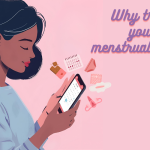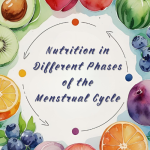
- 12.03.2025
- Menstrual Health Blog
Dreaming of a baby? Then you’re probably familiar with that strange world of calculations, charts, and constantly checking the calendar. Why all the trouble? Because no one ever explained in detail what the fertility window is and how to “catch” it. But let’s be honest—our bodies aren’t clocks, and they sometimes deviate from the schedule. Still, understanding your cycle can significantly increase your chances of conception.
The Fertility Window: What Is It Anyway?
So, let’s keep it simple. The fertility window is those few days in a month when your chances of getting pregnant are the highest. As they say, “time to gather stones.” Usually, it’s 3-6 days, including the day of ovulation (when the egg is released from the ovary) and a few days before it. Why? Because sperm are real marathoners—they can survive in the female body for up to 5 days, waiting for their “princess.” The egg, on the other hand, is a true lady. It lives only 24 hours after ovulation. If you miss it, you’ll have to wait until next month! She’s that picky. That’s why the likelihood of fertilization is highest if intimacy occurs a day or two before ovulation. That way, the sperm are already “in place,” waiting for the egg to appear.
The Menstrual Cycle and Its Secrets
Although school biology left many of us with the thought, “It just works somehow,” understanding your cycle isn’t that complicated. The menstrual cycle isn’t just a week of bleeding and then nothing. It’s a whole journey your body goes through every month. Your body is constantly changing throughout the cycle. When you have your period, it’s just the tip of the iceberg because much more is happening inside. Hormones are doing their dance, the uterus is building up and shedding its lining, and the ovaries are working on their schedule.
Each phase affects how you feel—both physically and emotionally. That’s why the menstrual cycle is truly a complex and continuous process, not just “those days” once a month.
- Menstruation (Days 1-7 of the cycle): The uterus sheds its old endometrium.
- Follicular phase (Days 1-13): The ovaries prepare an egg for release.
- Ovulation (Usually around Day 14 in a 28-day cycle): The time when a mature egg is released from the ovary.
- Luteal phase (Days 15-28): This is when the body prepares either for pregnancy or for the next menstruation.
And somewhere here lies our fertility window—usually between days 10 and 15 in a 28-day cycle. But… here’s the catch: not all women have such an “ideal” cycle. Some, for example, have shorter cycles—21 days, while others have longer ones—35 days. And for some (which is most of us), it even “jumps” around. One month it’s 29 days, then 31, then 27… How do you calculate the fertility window in that case? More on that later.
How to Calculate Your Fertility Window?
Ah, if only it were as simple as in textbooks! Here are a few ways to determine your fertile days:
1. Calendar Method for Tracking Ovulation. This is the simplest method, though not very accurate. To calculate your ovulation day, you need to know the length of your cycle—from the first day of one period to the first day of the next. Then subtract 14 days from that number. For example: if your cycle is 28 days, ovulation occurs around day 14. For a 32-day cycle, ovulation would be around day 18. And if your cycle is shorter, say 24 days, ovulation happens earlier, around day 10. It’s like basic math for your body, but remember—your body isn’t a calculator, so the accuracy of this method is limited. The fertility window is 5 days before the expected ovulation and the day after. But this method works well only for women with regular cycles. And honestly, there aren’t that many of them.
2. Basal Body Temperature (BBT) Tracking. One of the tried-and-true methods. Every morning, right after waking up and before getting out of bed, measure your temperature. Record the results. Before ovulation, the temperature is usually below 36.6°C. After ovulation, it rises by 0.2-0.5°C and stays elevated until the next period. By keeping a chart for a few months, you can notice when you usually ovulate and plan accordingly. Here’s an example: Days 1-13: 36.4-36.5°C; Days 14-15: rise to 36.7-36.9°C; Days 16-28: temperature remains elevated. Note that this is just an approximate example—every woman has her own readings.
3. Ovulation Tests. These work like pregnancy tests but detect luteinizing hormone (LH), which peaks 24-36 hours before ovulation. It’s best to start testing 2-3 days before your expected ovulation. If the test is positive—get to bed! (With your partner, of course).
4. Cervical Mucus Observation. It doesn’t sound very appetizing, but it’s one of the most reliable natural methods. Before ovulation, discharge becomes clear, stretchy (like egg whites), and slippery. This is a sign that your body is preparing for conception. After ovulation, the mucus becomes thicker or disappears.
5. Modern Apps and Gadgets. In a world where there’s an app for everything, fertility tracking is no exception. Apps like Selin can help you track your cycle, symptoms, and predict ovulation. There are also special devices—from simple thermometers that automatically record data to bracelets that track temperature, pulse, and other indicators during sleep.
Important Facts About the Fertility Window
– Not all cycles are the same. Even for one woman, cycle length can vary from month to month. Stress, illness, travel—all of these can affect ovulation.
– The fertility window is wider than one day. Although the egg lives only 24 hours, sperm can survive in the female body for up to 5 days. That’s why intimacy a few days before ovulation can lead to conception.
– Age affects fertility. As you age, your chances of conceiving decrease. At 20, the chance of getting pregnant each cycle is about 25%, at 30—20%, and at 40—less than 5%.
– Ovulation doesn’t always happen on day 14 of the cycle. This is a common myth. In reality, the day of ovulation depends on the overall length of your cycle.
– Ovulation symptoms are individual. Some women feel pain in their side (called “Mittelschmerz”), breast tenderness, increased libido, or mood changes during ovulation. Others don’t notice any signs.
How to Increase Your Chances of Conception—Helpful Tips
Besides calculating your fertility window, there are other ways to boost your chances of conception. A healthy lifestyle. Yes, we know it sounds like generic advice, but it always works. A balanced diet, moderate exercise, and avoiding harmful habits—all of these improve reproductive health. Frequency of intercourse. Doctors recommend intimacy every 2-3 days throughout the cycle. This ensures a constant supply of “fresh” sperm. Position after intercourse. While there’s no scientific proof that a specific position during or after sex increases the chances of conception, many women say lying with their legs raised for 10-15 minutes after intimacy helped them. It’s worth a try—it certainly won’t hurt! Avoid lubricants. Most of them contain substances that can harm sperm. If you can’t do without them, look for special “fertility-friendly” options. See a doctor if something’s wrong. If you’ve been trying to conceive for over a year (or 6 months if you’re over 35), it might be time to consult a specialist.
What If It Doesn’t Work? A Few Words of Comfort
Don’t let “failure” scare you. Even for the healthiest couples, the chance of conception each cycle is only 20-25%. So, if it didn’t happen this month—don’t be upset. Planning a pregnancy can sometimes feel like a real test of nerves. Constantly counting days, measuring temperature, taking tests… All of this can create extra stress, which, by the way, also negatively affects fertility. So, our advice is—relax! Enjoy the process, don’t obsess over the result. Yes, of course, easier said than done. And remember: every woman is unique. What works for one might not work for another. Listen to your body, observe it, and you’ll definitely find your path to motherhood.
Conclusion
The fertility window is simply the period in your cycle when you can get pregnant. Nothing magical, just biology. It’s those few days when your egg is ready for fertilization. Although it lives only 24 hours, sperm can survive in your body for up to five days, so the “open window” lasts longer. You can find out about your fertile days in different ways. You can simply count days, measure your temperature every morning, monitor your discharge, or use modern tests or apps on your phone that will do all the calculations for you.
If you want to learn more about this topic, we’ve prepared an interesting article on ovulation—check it out and learn all about this important process in your body.
For now—enjoy life, your partner, and the process. Because pregnancy and motherhood are just the beginning of a big journey. And the calmer you approach this stage, the easier it will be for you in the next ones. Good luck and patience on this journey! And remember—you’re not alone. Millions of women are going through or have already gone through the same thing. And for most of us, everything worked out just fine. It will for you too!














